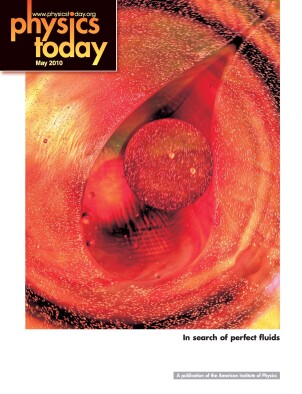An unexpected cosmic current
DOI: 10.1063/1.4796238
According to cosmological theory, the expanding universe has no preferred direction. Thus, the cosmos may be likened to a rising loaf of raisin bread, with the raisins playing the roles of galaxies. Viewed from Earth (or anywhere else), the motion of a distant galaxy should be determined by the overall cosmic expansion. Now, following on their earlier work presented in 2008, Alexander Kashlinsky of NASA’s Goddard Space Flight Center and colleagues report that superimposed on the cosmic expansion is a universal flow along the line from Earth to the Centaurus and Hydra constellations. The “dark flow,” as the authors call it, was revealed in the cosmic microwave background by minuscule temperature fluctuations that arise when x-ray-emitting gas from galaxy clusters scatters off CMB photons. A catalog of more than 1000 x-ray-luminous galaxy clusters told Kashlinsky and company where in the Wilkinson Microwave Anisotropy Probe’s five-year data set they should look for those fluctuations. The researchers had to average over ensembles of clusters to see evidence for the dark flow, which persisted unabated to the furthest measurable reaches, 2.5 billion light-years away. It’s as if—and this is a literal possibility—matter beyond the edge of the visible universe is pulling the entire cosmos toward it. (A. Kashlinsky et al., Astrophys. J. Lett. 712 , L81, 2010 http://dx.doi.org/10.1088/2041-8205/712/1/L81
